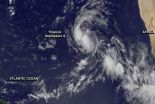(Press-News.org) Higher HIV risk behaviors and prevalence have been reported among Puerto Rican people who inject drugs (PRPWID) since early in the HIV epidemic. Now that HIV prevention and treatment advances have reduced HIV among PWID in the US, researchers from New York University's Center for Drug Use and HIV Research (CDUHR) examined HIV-related data for PRPWID in Puerto Rico (PR) and Northeastern US (NE) to assess whether disparities among PRPWID continue.
The study, "Addressing the HIV/AIDS epidemic among Puerto Rican people who inject drugs: the Need for a Multi-Region Approach," published in the American Journal of Public Health (on-line ahead of print, September 11, 2014) described the epidemic and the availability of HIV prevention and treatment programs in areas with a high concentration of Puerto Ricans, in order to provide recommendations to reduce HIV in the population.
"We reviewed HIV-related data for PRPWID living in Puerto Rico and Northeastern US, which contains the highest concentration of Puerto Ricans out of any US region," said Dr. Sherry Deren, senior research scientist at NYU College of Nursing, and director of CDUHR. "Injection drug use as a risk for HIV continues to be over-represented among Puerto Ricans. Lower availability of HIV prevention tools (syringe exchange and drug treatment) and ART treatment challenges, for PWID in PR, contribute to higher HIV risk and incidence for PRPWID in both locations."
In 2010, the Northeast had the highest reported rates of new AIDS diagnoses, with Hispanics accounting for 27% of those diagnosed in the region. Furthermore, 48.7% of Hispanics in the US with a diagnosis of HIV were located in the Northeast. The Northeast also had more new infections attributed to injection drug use (15.8%) than other regions of the US (8.8%). As prevalent as this was in the Northeast, in 2010 the rate of HIV diagnoses attributed to injection drug use in Puerto Rico was over two times greater (20.4%) than in the rest of the US.
Despite the fact Puerto Ricans comprise only 9% of the US Hispanic Population, nearly 23% of HIV cases among Hispanics are among those born in Puerto Rico. Researchers also noted that heterosexual HIV transmission has now surpassed injecting-related HIV transmission in Puerto Rico (40.7% vs 20.4%).
"Controlling heterosexual transmission of HIV will require controlling HIV infection among people who inject drugs, as those who inject drugs and are sexually active will serve as a continuing reservoir for future heterosexual transmission if injecting-related HIV transmission is not brought under control," cautions Dr. Deren.
Syringe exchange and drug treatment programs are the two primary methods responsible for reducing the rate of infection among people who inject drugs. The efficacy of such programs in reducing HIV transmissionis well established. The evidence indicates that these services are much less available in Puerto Rico. In a 2011 survey of syringe exchange programs in the Northeast and Puerto Rico, the researchers found that the annual budget for such programs in the Northeast averaged over $400K, more than five times the average budgets of those in Puerto Rico ($80K).
"The differences in the annual budgets have very important implications for reducing HIV transmission and other health problems among people who inject drugs," said Dr. Deren. "Larger budgets for such programs allows for a greater number of syringes to be exchanged, and for programs to offer other services in addition to the exchange, such as HIV screenings."
The researchers note that the continuing ban on the use of U.S. federal funds towards needle exchanges contributes to the inability to grow such public health programs in Puerto Rico to meet the public health need. Additionally, while there are still gaps in drug treatment program availability across the US, Puerto Rico has been shown to have a narrower range of such services.
"In light of the lack of available resources in Puerto Rico, many individuals migrate to the North East seeking drug treatment," Dr. Deren noted. "Many of those coming to the Northeast, however, do not become engaged in evidence-based drug treatment."
The researchers recommend that these disparities, in addition to the many other challenges afflicting Puerto Rican people who inject drugs, be addressed by the development of a federally-supported Northeast/Puerto Rico collaborative initiative to facilitate and coordinate efforts throughout these regions. The researchers also emphasize the need for the development and implementation of culturally appropriate HIV prevention interventions.
INFORMATION:
Acknowledgments: This work was supported by the National Institute on Drug Abuse grant # P30DA011041 (Center for Drug Use and HIV Research), S. Deren, PI.
Note: The contents of this paper are solely the responsibility of the authors and do not represent the official views of the National Institute on Drug Abuse, the Administration de Servicios de Salud Mental y Contra la Adicción (ASSCMA), or any other agency or institution named within this paper.
Researcher Affiliations: Sherry Deren, PhD, Center for Drug Use and HIV Research, NYU College of Nursing, New York, NY; Camila Gelpí-Acosta, PhD, National Development and Research Institutes, New York, NY; Carmen E. Albizu-García, MD, Graduate School of Public Health, University of Puerto Rico, San Juan, PR; Ángel González, MD, Administración de Servicios de Salud Mental y Contra la Adicción (ASSMCA), San Juan, PR; Don C. Des Jarlais, PhD, Chemical Dependency Institute, Beth Israel Medical Center, New York, NY , Salvador Santiago-Negrón, PhD, MPH, Administración de Servicios de Salud Mental y Contra la Adicción (ASSMCA), San Juan, PR
Statement of Authors' Contributions: S. Deren conceptualized the paper. S. Deren, C. Gelpí-Acosta ,Carmen E. Albizu-García and D.C. Des Jarlais drafted different sections of the paper. All authors contributed original ideas and reviewed drafts of the paper.
Human Participation Protection Statement: Institutional Review Board approval was not required for the materials in this paper since data were obtained from secondary sources.
About CDUHR
The mission of the Center for Drug Use and HIV Research (CDUHR) is to end the HIV and HCV epidemics in drug using populations and their communities by conducting transdisciplinary research and disseminating its findings to inform programmatic, policy, and grass roots initiatives at the local, state, national and global levels. CDUHR is a Core Center of Excellence funded by the National Institute on Drug Abuse (Grant #P30 DA011041). It is the first center for the socio-behavioral study of substance use and HIV in the United States and is located at the New York University College of Nursing. For more information, visit http://www.cduhr.org.
About New York University College of Nursing
NYU College of Nursing is a global leader in nursing education, research, and practice. It offers a Bachelor of Science in Nursing, a Master of Science and Post-Master's Certificate Programs, a Doctor of Philosophy in Research Theory and Development, and a Doctor of Nursing Practice degree. For more information, visit https://nursing.nyu.edu/
Puerto Ricans who inject drugs among Latinos at highest risk of contracting HIV
Study calls for the development of a coordinated, multi-region effort across these locations as an important component in efforts to end the HIV/AIDS epidemic
2014-09-11
ELSE PRESS RELEASES FROM THIS DATE:
Chemical signals in the brain help guide risky decisions
2014-09-11
A gambler's decision to stay or fold in a game of cards could be influenced by a chemical in the brain, suggests new research from the University of British Columbia.
The rise and fall of dopamine plays a key role in decisions involving risk and reward, from a baseball player trying to steal a base to an investor buying or selling a stock. Previous studies have shown that dopamine signals increase when risky choices pay off.
"Our brains are constantly updating how we calculate risk and reward based on previous experiences, keeping an internal score of wins and losses," ...
Mice and men share a diabetes gene
2014-09-11
A joint work by EPFL, ETH Zürich and the CHUV has identified a pathological process that takes place in both mice and humans towards one of the most common diseases that people face in the industrialized world: type 2 diabetes.
This work was conducted in Johan Auwerx's (EPFL) and Ruedi Aebersold's (ETH Zürich) laboratories, and succeeded thanks to the combination of each team's strengths. The relevance of their discovery, published today in Cell Metabolism, results from their joint effort.
In Lausanne, the researchers carried out a detailed study of the genome and ...
Compound protects brain cells after traumatic brain injury
2014-09-11
A new class of compounds has now been shown to protect brain cells from the type of damage caused by blast-mediated traumatic brain injury (TBI). Mice that were treated with these compounds 24-36 hours after experiencing TBI from a blast injury were protected from the harmful effects of TBI, including problems with learning, memory, and movement.
Traumatic brain injury caused by blast injury has emerged as a common health problem among U.S. servicemen and women, with an estimated 10 to 20 percent of the more than 2 million U.S. soldiers deployed in Iraq or Afghanistan ...
Proactive monitoring of inflammatory bowel disease therapy could prolong effectiveness
2014-09-11
BOSTON – Proactive monitoring and dose adjustment of infliximab, a medication commonly used to treat inflammatory bowel disease (IBD), could improve a patient's chances of having a long-term successful response to therapy, a pilot observational study at Beth Israel Deaconess Medical Center concludes.
The study, published in the Inflammatory Bowel Diseases, evaluated the levels of infliximab, an antibody designed to bind to and block the effects of TNF-alpha, an inflammatory protein found in high levels in patients with IBD, such as Crohn's disease and ulcerative colitis, ...
LSU scientists lead research on speciation in the tropics
2014-09-11
BATON ROUGE – In a study that sheds light on the origin of bird species in the biologically rich rainforests of South America, LSU Museum of Natural Science Director and Roy Paul Daniels Professor in the Department of Biological Sciences, Robb Brumfield, and an international team of researchers funded by the National Science Foundation, or NSF, published a paper this week challenging the view that speciation – the process by which new species are formed – is directly linked to geological and climatic changes to the landscape.
The researchers, whose findings were published ...
Microscopic diamonds suggest cosmic impact responsible for major period of climate change
2014-09-11
Around 12,800 years ago, a sudden, catastrophic event plunged much of the Earth into a period of cold climatic conditions and drought. This drastic climate change—the Younger Dryas—coincided with the extinction of Pleistocene megafauna, such as the saber-tooth cats and the mastodon, and resulted in major declines in prehistoric human populations, including the termination of the Clovis culture.
With limited evidence, several rival theories have been proposed about the event that sparked this period, such as a collapse of the North American ice sheets, a major volcanic ...
Facebook posts reveal personality traits, but recent changes could make it harder to do so
2014-09-11
LAWRENCE — A study from the University of Kansas finds that people can accurately detect the personality traits of strangers through Facebook activity; however, changes to the social media site in the past three years could be making it harder to do so.
Researchers sampled 100 Facebook users, paralleling the demographics of the social networking site, and asked them to fill out a personality survey. A group of coders looked at each person's Facebook activity, 53 cues in all, to see whether certain personality types were more likely to do specific activities. The researchers ...
Sometimes, adolescents just can't resist
2014-09-11
Don't get mad the next time you catch your teenager texting when he promised to be studying.
He simply may not be able to resist.
A University of Iowa study found teenagers are far more sensitive than adults to the immediate effect or reward of their behaviors. The findings may help explain, for example, why the initial rush of texting may be more enticing for adolescents than the long-term payoff of studying.
"The rewards have a strong, perceptional draw and are more enticing to the teenager," says Jatin Vaidya, a professor of psychiatry at the UI and corresponding ...
Satellite view of newborn Atlantic Tropical Depression 6
2014-09-11
The sixth tropical depression of the Atlantic Ocean Hurricane Season formed in the Eastern Atlantic Ocean and NOAA's GOES-East satellite captured it.
A visible image of Tropical Depression 6 was taken by NOAA's GOES-East satellite at 7:45 a.m. EDT on September 11 as it developed. The image was created by NASA/NOAA's GOES Project at the NASA Goddard Space Flight Center in Greenbelt, Maryland.
In addition to using GOES imagery and data from other NOAA and NASA satellites, The National Hurricane Center also uses measurements from the Advanced Scatterometer or ASCAT instrument ...
NJIT researchers working to safeguard the shoreline
2014-09-11
An NJIT research team has estimated the total mass of oil that reached the Gulf of Mexico shore in the wake of the BP Deepwater Horizon blowout. It's the first time such an estimate was reported, and the study is published in the August issue of Environmental Science and Technology.
The researchers found that 22,000 tons of oil reached the Gulf shoreline in 2010. This finding will help officials determine the persistence of oil on the shore and identify potential harm to the ecosystem.
The study was conducted by the Center for Natural Resources Development and Protection ...
LAST 30 PRESS RELEASES:
School meals could unlock major gains for human and planetary health
Menopause hormone therapy does not appear to impact dementia risk
Signature patterns of brain activity may help predict recovery from traumatic brain injury
Dresden study uncovers new key mechanism in cancer cells
New species are now being discovered faster than ever before, study suggests
Cannabis-based products show limited short-term benefit for chronic pain, with increased risk of adverse effects
Cannabis products with more THC slightly reduce pain but cause more side effects
Clearing the brain of aging cells could aid epilepsy and reduce seizures
Brain injuries linked with potential risk of suicide, new study finds
New technique lights up where drugs go in the body, cell by cell
New study finds movement of fishing fleets can reveal shifts in marine ecosystems
Embargoed: New evidence points to potential treatment for vascular dementia
Study uncovers disrupted brain balance in alcohol dependence
Working in groups can help Republicans and Democrats agree on controversial content moderation online
Structural findings reveal how distinct GPCR ligands create different levels of activation
Anything-goes “anyons” may be at the root of surprising quantum experiments
UC review: Maximizing workplace opportunity for veterans
From generation to complex control: Metasurfaces make perfect vortex beams "within reach"
Thin-film lithium niobate-based detector: recent advances and perspectives
Exploring why some people may tend to persistently make bad choices
How cells balance their protein levels
Nirsevimab vs RSVpreF vaccine for RSV–related hospitalization in newborns
Effectiveness and impact of maternal RSV immunization and nirsevimab on medically attended RSV in US children
AI gives scientists a boost, but at the cost of too many mediocre papers
Next-generation vision model maps tree growth at sub-meter precision
Genes aren’t destiny for inherited blindness, study shows
MIT study: High-fat diets make liver cells more likely to become cancerous
Exposure to multiple fine particulate matter components and incident depression in the US Medicare population
Risk of burdensome health care spending over time in the US
Nirsevimab against hospitalizations and emergency department visits for lower respiratory tract infection in infants
[Press-News.org] Puerto Ricans who inject drugs among Latinos at highest risk of contracting HIVStudy calls for the development of a coordinated, multi-region effort across these locations as an important component in efforts to end the HIV/AIDS epidemic




